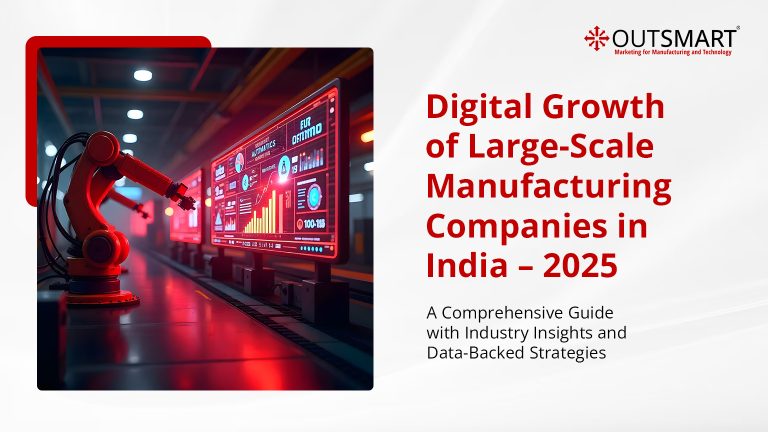Introduction
Account-based marketing vs lead generation- these approaches offer unique benefits and cater to different objectives. Staying ahead of the curve is crucial. With the rise of digital marketing, these two popular strategies are discussed below:
In this article, we will explore the differences between account-based marketing (ABM) and lead generation and help you determine which strategy is the right fit for your manufacturing company.

Understanding Lead Generation
Lead generation involves identifying potential segments of leads and nurturing their interest in your products or services. The goal is to attract a wide range of leads and guide them through the sales funnel until they become customers. The process begins by creating compelling content that appeals to your target audience, reaching out to potential buyers, and engaging them with your brand. By casting a wide net, lead generation aims to generate a higher number of leads, increasing the chances of converting them into paying customers. The focus here is on quantity, attracting as many leads as possible.
Exploring Account-Based Marketing
Account-based marketing, on the other hand, takes a more targeted and personalized approach. ABM focuses on quality over quantity, treating each targeted account as a unique market. Instead of casting a wide net, ABM involves selecting high-value accounts and creating customized campaigns tailored to their specific needs. By crafting personalized content for key decision-makers at these ideal companies, ABM aims to achieve a higher return on investment (ROI). Successful ABM strategies require meticulous data management, a high level of personalization, and close collaboration between the marketing and sales departments.
Account-Based Marketing Vs Lead Generation
To determine which strategy is the right fit for your manufacturing company, it’s essential to understand the key differences between account-based marketing and lead generation. Let’s explore them:
Lead Focus
Lead generation emphasizes generating as many leads as possible, while ABM prioritizes carefully selected high-value targets. The focus of lead generation is on more leads, whereas ABM aims for best-fit leads.
Audience
Lead generation aims to reach a broad audience, focusing on buyer personas. ABM, however, targets specific accounts—the ideal companies or organizations you want to work with.
Departmental Relationships
Lead generation typically separates marketing and sales departments, with marketing responsible for lead generation and sales handling the lead conversion. ABM thrives on close alignment and collaboration between marketing and sales teams.
Scalability
Lead generation is designed to scale easily to meet the growing needs of your manufacturing company. ABM requires more time and effort due to its personalized approach, making it less scalable.
Product Value
Lead generation is suitable for low-value products with shorter sales cycles, aiming to capture a large volume of leads quickly. ABM is effective for high-value products or long-term projects, targeting specific accounts and building personalized relationships with key decision-makers over time. ABM accommodates complex sales processes and multiple stakeholders.
Channels
Lead generation leverages organic channels like social media, articles, and blog posts. ABM takes a more direct approach, utilizing email, social media messages, in-person interactions, and other personalized channels.
Personalization
Lead generation content tends to be more generic, aiming to appeal to a segment of the audience. ABM requires a high level of personalization to cater to key decision-makers at target accounts.
Metrics
Lead generation focuses on metrics like clicks, page views, impressions and downloads. ABM employs key performance indicators (KPIs) that demonstrate meaningful results with target accounts, such as engagement metrics.
Key Differences Between Account-Based Marketing and Lead Generation
Apart from ABM and lead generation, you may come across the term “demand generation.” While all three strategies aim to boost sales and ROI, they differ in their approach:
- Demand generation is an outbound activity that focuses on increasing brand awareness, generating attention, and growing your audience.
- Lead generation aims to convert your audience into qualified leads.
- Account-based marketing emphasizes building relationships with targeted accounts.
Combining Account-Based Marketing and Lead Generation
Rather than choosing between account-based marketing and lead generation, both strategies can complement each other. A lead generation campaign helps constantly discover and nurture new leads, allowing you to identify organizations suitable for a target account. At this stage, account-based marketing efforts can be implemented to engage key decision-makers at these target accounts. By incorporating both strategies into your digital marketing framework, you can maximize your chances of success.
The skills required for lead generation and account-based marketing can differ to a large extent. Lead generation campaigns rely on skills such as understanding the target audience, creating compelling content, implementing effective lead capture mechanisms, and optimizing lead nurturing workflows. These skills are centred around attracting a wide range of potential leads and efficiently converting them.
Account-based marketing, on the other hand, requires skills such as account research and analysis, personalized messaging and communication, relationship-building, and effective collaboration with sales teams. The emphasis is on understanding the unique needs and challenges of specific accounts and tailoring the marketing efforts accordingly. ABM often involves working closely with sales teams to align strategies and ensure a seamless transition from marketing engagement to sales conversion.
Conclusion
Manufacturing companies must adapt their B2B marketing strategies to meet the evolving demands of the digital landscape. While both account-based marketing and lead generation have their strengths and differences, they can work synergistically to achieve your goals. By leveraging the benefits of personalized account-based marketing and the wider reach of lead generation, your manufacturing company can generate more customers, pursue new revenue opportunities, and increase ROI.







